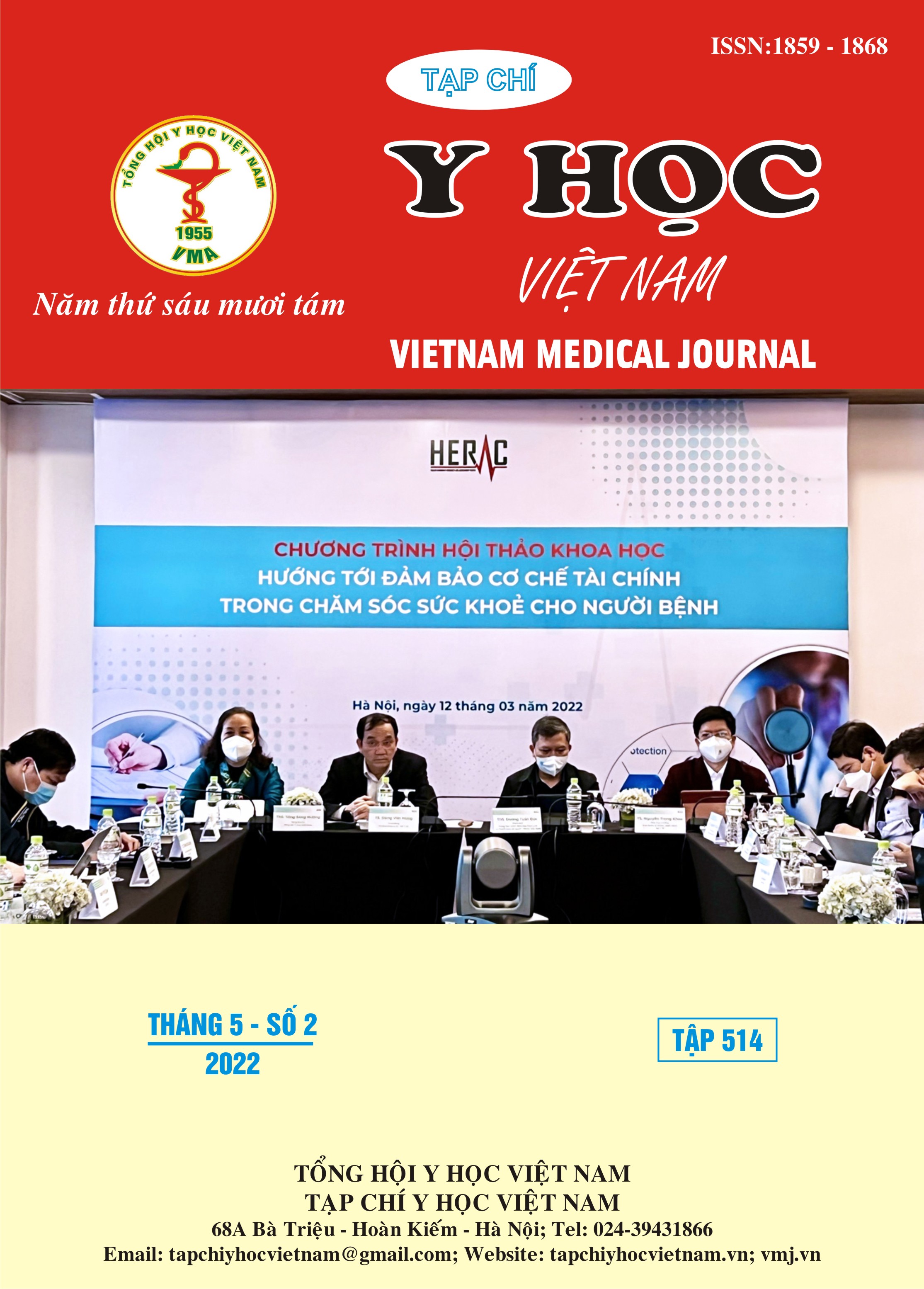OUTCOMES OF TREATMENT AND REHABILITATION: POST-OPERATIVE STATUS OF CHILDREN WITH CLEFT LIP AND/OR PALATE AT HANOI CENTRAL ODONTO STOMATOLOGY HOSPITAL, 2019-2021
Main Article Content
Abstract
Objective: To evaluate the outcomes of treatment and rehabilitation of children with cleft lip and/or cleft palate who underwent surgery. Methodology: CA cross-sectional descriptive study was conducted on 196 children under 15 years of age with cleft lip and/or palate who attended treatment at Hanoi Central Odonto-Stomatology Hospital in 2019-2021. Results: The rate of early complications occurring within the first one weeks after surgery was quite high (58.7%) in which hematoma and bruising were the most common (83.5%). The ability to chew improved most markedly after surgery and reached over 85% after 6 months, followed by the ability to pronounce. The rate of slightly stretched scars and hypertrophic scar within the first one month and six months after surgery still accounted for the majority. Children have positive expressions and changes to integrate into the community and society. Conclusion: The study showed a positive impact of surgery in improving the physical, mental and functional health of children with cleft lip and/or cleft palate despite the early complication rate after surgery being quite high. However, children still face some barriers to integrating and adapting to the community.
Article Details
Keywords
Outcome of treatment, Rehabilitation, Post-operative, Children, Cleft lip and/or palate
References
2. Taib B.G., Taib A.G., Swift A.C., et al. (2015). Cleft lip and palate: diagnosis and management. Br J Hosp Med Lond Engl 2005, 76(10), 584–585, 588–591.
3. Mulliken J.B. and Martínez-Pérez D. (1999). The principle of rotation advancement for repair of unilateral complete cleft lip and nasal deformity: technical variations and analysis of results. Plast Reconstr Surg, 104(5), 1247–1260.
4. Liang Z., Yao J., Chen P.K.T., et al. (2018). Effect of Presurgical Nasoalveolar Molding on Nasal Symmetry in Unilateral Complete Cleft Lip/Palate Patients after Primary Cheiloplasty without Concomitant Nasal Cartilage Dissection: Early Childhood Evaluation. Cleft Palate-Craniofacial J Off Publ Am Cleft Palate-Craniofacial Assoc, 55(7), 935–940.
5. José Alberto de Souza Freitas, Daniela Gamba Garib, Marchini Oliveira, et al. (2012). Rehabilitative treatment of cleft lip and palate: experience of the Hospital for Rehabilitation of Craniofacial Anomalies - USP (HRAC-USP) - Part 2: Pediatric Dentistry and Orthodontics. Oral Sci, 20(2), 9–15.
6. Tatum S.A. (2014). Pediatric facial plastic and reconstructive surgery. Facial Plast Surg Clin N Am, 22(4), xiii.
7. Vũ Quang Hưng, Phạm Thị Nhung, Đoàn Trung Hiếu (2021). Hình thái dị tật khe hở môi, vòm miệng bẩm sinh ở trẻ em tại bệnh viện Đại học Y Hải Phòng. Tạp Chí Học Việt Nam, 503(2), 247–251.
8. Nguyen H.L., Nguyen V.M., and Tran X.P. (2021). Cleft Lip/Nasal Deformities After Plastic Surgery for Unilateral Cleft Lip/Palate: A Prospective Study at a Large Hospital in Vietnam. Clin Cosmet Investig Dent, 13, 305–314.
9. Sell D., Grunwell P., Mildinhall S., et al. (2001). Cleft Lip and Palate Care in the United Kingdom—The Clinical Standards Advisory Group (CSAG) Study. Part 3: Speech Outcomes. Cleft Palate Craniofac J, 38(1), 30–37.
10. Ruiz-Guillén A., Suso-Ribera C., Romero-Maroto M., et al. (2021). Perception of quality of life by children and adolescents with cleft lip/palate after orthodontic and surgical treatment: gender and age analysis. Prog Orthod, 22, 10.


